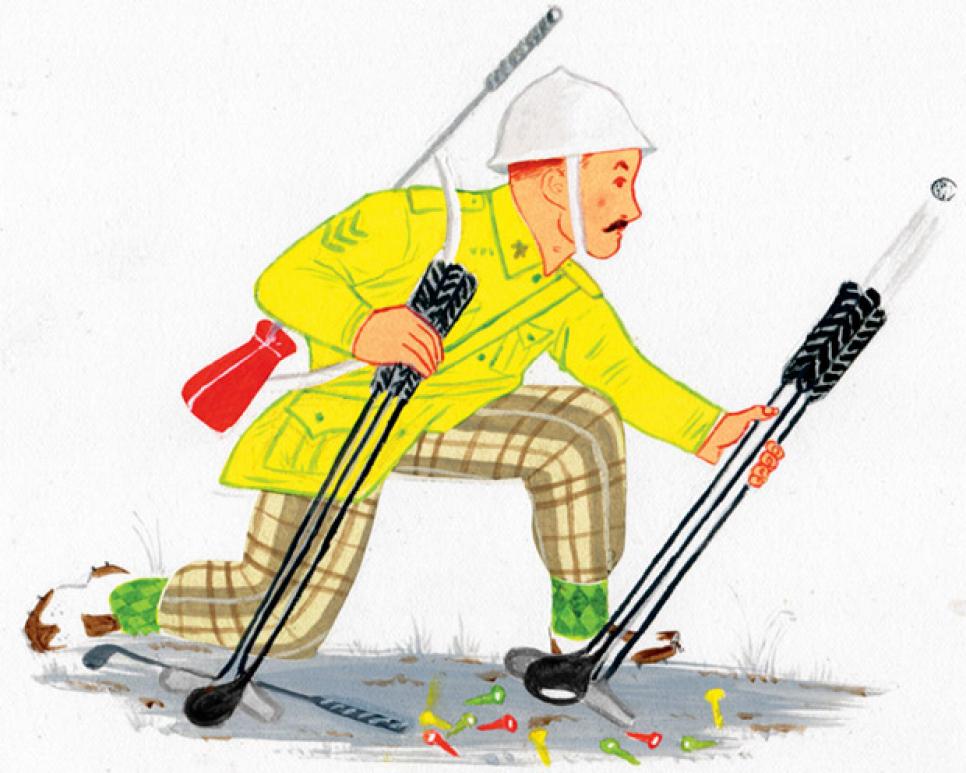Ask Golf Digest

Why do all new club ads tout "higher launch?" Mid- and high- handicappers like me flip our wrists and need all the help we can get to keep the launch down!
—Francois deVilliers, San Jose, Calif.
A: You don't need to launch it lower, you need to launch it better. The higher you can hit the ball without dramatically increasing spin, the more distance you can produce. The trouble with a wristy swing is that it increases the loft of the club at impact, which creates excessive, distance-sucking spin. If you're able to generate a lot of speed with your wrist flip, a fitter might recommend less loft on your driver as a way to reduce spin. That should work, especially if you have no plans to take a lesson. However, one key benefit of today's adjustable-loft drivers is that they allow you to change the loft of your club as your swing improves.
Q: I played in a two-person team event. My partner and I each had an opponent in 18 holes of match play, and at the end we got a total score based on both matches. I hit my second shot on a dogleg par 5, and no one saw where it landed. So I hit a provisional. Walking around the turn, my opponent's partner hollered: "Here's your first ball—it's OK." He picked up my provisional. I hit my next shot on the green. When I marked it and picked it up, I noticed it wasn't my ball. I forfeit the hole for hitting the wrong ball, but shouldn't my opponent be penalized for picking up my playable ball?
—Daniel Tennant, Fairview, Ore.
A: Because you were playing an individual match, the golfer who picked up your ball would be considered an outside agency (not an opponent), and he'd suffer no penalty. Even if it had been a more traditional four-ball match (you and a partner against two opponents), he wouldn't be penalized for lifting the ball. At the time he picked it up, your ball had not been declared lost, so the provisional wasn't in play. It never became the ball in play because you played a wrong ball and were disqualified from the hole. But all isn't lost: Your partner can still try to win the hole.
Q: Why do we have to wait 30 minutes from the end of a Golf Channel broadcast and the start of network broadcasts?
—James McCabe, Nampa, Idaho
A: This occurs only when the Golf Channel flips to CBS coverage. CBS requires a "technical transfer" that includes graphics packages, a Golf Channel spokesman explains. The same process happens when NBC picks up a tournament that has been airing on the Golf Channel, but it's able to make the transfer during a single commercial break.
Q: Do PGA Tour players have to pay entry fees?
—Richard Masterson, Hayward, Calif.
Card-carrying PGA Tour members don't have to pay, but players hoping to qualify have to chip in $450. The same is true for Web.com events. It's $220 on the Champions Tour and $200 on the LPGA Tour. Want to play the U.S. Open? The USGA charges all participants $150, even the defending champ. The British Open gets £140 a player. There are no entry fees to play the Masters or PGA Championship.
QUICK HITS
Fist bump after a birdie?
Better than a high-five.
Ideal SPF?
30, and apply every two hours.
Mascot headcovers?
If you must.
Drink from a cooler on the course?
Risky.
IS THIS POSSIBLE?
Some of Golf Digest's top-rated courses have posted green fees of $350 and up. Seriously?
Yes, and people actually pay them. The average green fee among our 100 Greatest Public Courses of 2013
was $204, an increase of $10 from 2011. Most golf resorts discount these "walk-up" prices somewhat if you stay onsite—though not all of them. The fee at Las Vegas' Shadow Creek
is $500. Take it or leave it. Ditto Pebble Beach
($495).
*Submit your burning questions here: ask@golfdigest.com or on Twitter @golfdigestmag
.*

